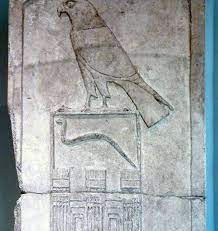Djet, Egypt, First Dynasty, King, Pharaoh, Ancient History, Royal Succession, Hierakonpolis, Ancient Egypt, Dynastic Period, Nile Valley Civilization
In the annals of ancient Egyptian history, the figure of King Djet stands as a testament to the dawn of dynastic rule. As the third ruler of Egypt’s illustrious First Dynasty, King Djet’s reign holds a pivotal place in the chronicles of pharaonic lineage. Join us as we delve into the life and legacy of this enigmatic monarch.
King Djet, also known as Wadj, ascended to the throne around 3000 BCE, following in the footsteps of his predecessors, Narmer and Hor-Aha. His rule marked a period of consolidation and expansion for the burgeoning Egyptian state, as he sought to solidify central authority and extend the reach of royal power.
One of the most enduring legacies of King Djet’s reign is his famous tomb at Abydos, one of the earliest royal burials discovered in Egypt. Excavated by pioneering archaeologist Flinders Petrie in the late 19th century, the tomb yielded a wealth of artifacts and inscriptions that shed light on the rituals and beliefs of ancient Egyptian funerary practices.
Among the most striking features of King Djet’s tomb is the presence of the serekh, a stylized representation of a palace facade with the king’s name inscribed within. This distinctive symbol, which became a hallmark of royal iconography throughout Egyptian history, served to legitimize the king’s rule and assert his divine mandate to govern.
In addition to his architectural and funerary achievements, King Djet is also credited with furthering the development of hieroglyphic writing, which played a crucial role in the administration and communication of the ancient Egyptian state. Inscriptions bearing his name have been found on a variety of artifacts, ranging from seal impressions to pottery fragments, attesting to his enduring influence on Egyptian culture and society.
Despite the passage of millennia, the legacy of King Djet endures as a testament to the enduring power and majesty of Egypt’s ancient rulers. From his monumental tombs to his contributions to writing and royal symbolism, King Djet’s reign continues to fascinate and inspire scholars and enthusiasts alike, offering a tantalizing glimpse into the dawn of dynastic civilization in the land of the pharaohs.

